Exiles on Green Street: 40 years ago, Rolling Stones rocked Worcester's Sir Morgan’s Cove
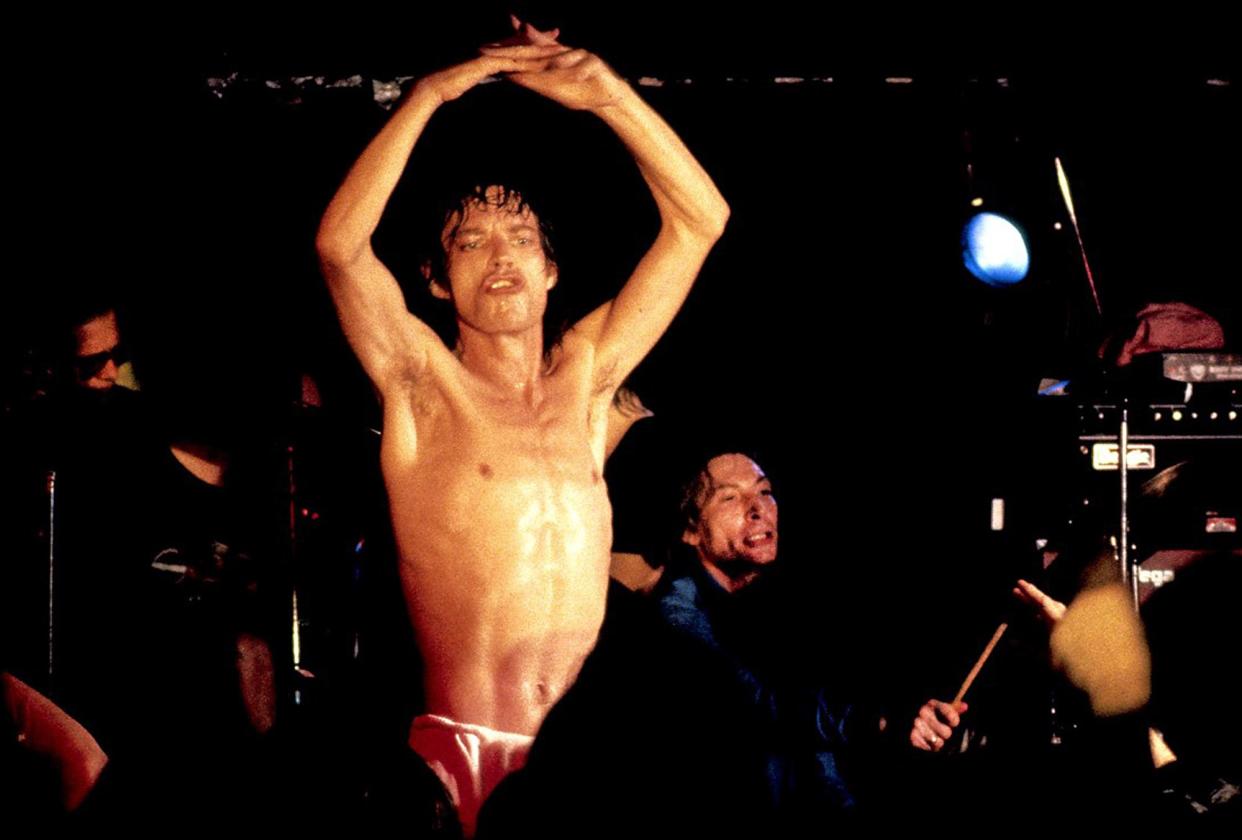
WORCESTER — Forty years ago Tuesday, this city, for one night, was the envy of the rock 'n' roll world.
And even four decades later, the story about how the Rolling Stones rolled onto Green Street and played a small-club gig at Sir Morgan’s Cove gathers no moss.
Prior to Worcester’s British Invasion of the highest order, the Cove had a reputation as a gritty rock club. On Sept. 14, 1981, it became a legendary rock club.
Holed up in their practice space at Long View Farms Studio in North Brookfield since mid-August, the Stones were itching to play live in a small club.
And Sir Morgan’s fit the bill.
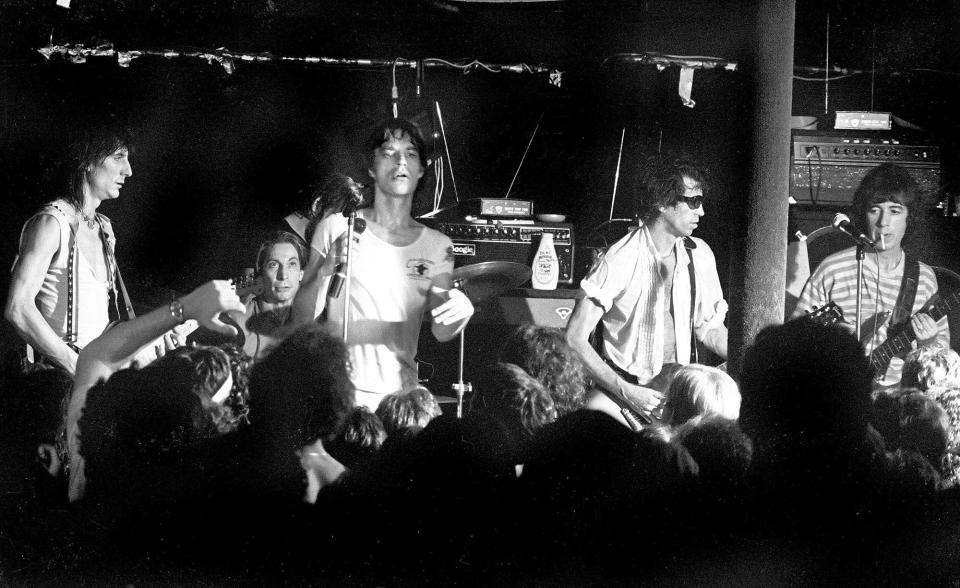
“The word that Worcester would be the site of the first Rolling Stones concert in three years raced around town at a speed that rivaled Keith Richards’ ability to blister notes during a fevered guitar solo,” the front-page story on the Worcester Telegram declared the morning of Sept. 15, 1981. “Fans of all sizes and descriptions flocked to the streets in search of tickets — And wild horses wouldn’t have kept them away.”
The night Worcester got its “ya-ya’s out” started at 6:20 a.m. when WAAF 107.3 FM disc-jockey Dave Bernstein announced — from the station’s studio on the second floor of the Cocaine Reality Building at 34 Mechanic St. — that the Rolling Stones would be playing a low-key informal gig somewhere in New England.
He added that WAAF would be on the streets in and around Worcester giving away all the tickets to people over 20 wearing a WAAF T-shirt or displaying a WAAF bumper sticker.
More: Rare, 40-year-old photos of the Rolling Stones rocking Sir Morgan’s Cove unearthed
In no time, the city streets were filled with people wearing black WAAF T-shirts or covered with WAAF bumper stickers, while others cruised the roadways in cars decorated with stickers and homemade signs, all in an effort to score free Stones tickets.
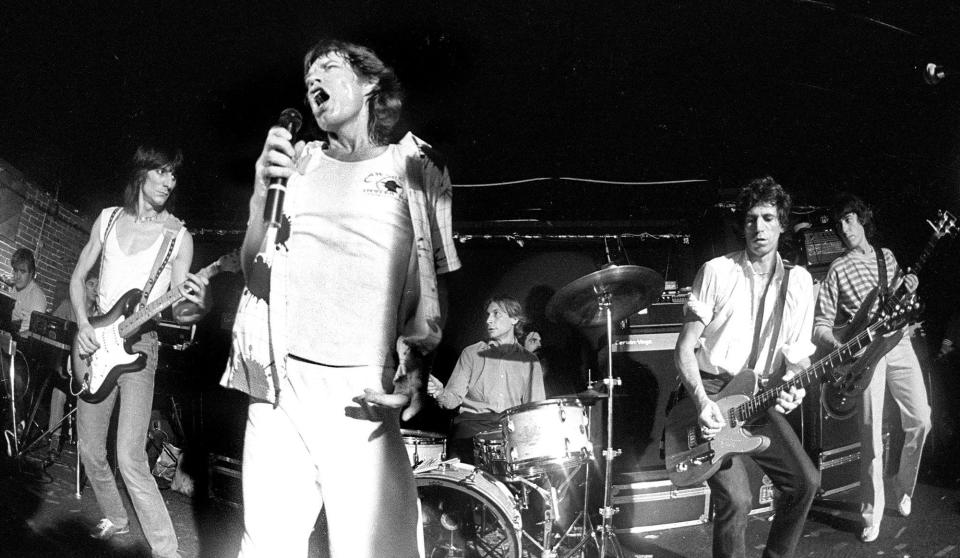
Stones agreed to 'secret' club gig
In the fall of 1981, Rob Barnett was the music director for WAAF 107.3 FM. It was Barnett who made the proposal to the Stones to play a “secret” (and free) club gig. It would be presented by the radio station. The proposal was so crazy that somehow Mick Jagger and the Stones agreed to it.
A few nights earlier, Ian “Stu” Stewart, the Rolling Stones’ road manager and pianist, arranged a meeting at the Paxton Inn to hammer out details for what would become Worcester’s proudest rock ‘n’ roll moment and “one of the best radio station promotions ever,” Barnett said.
Jagger wanted the Stones to play in a small club before they went on tour. After Stewart surveyed local venues, the backdoor leading to the stage at Sir Morgan’s Cove sealed the deal, while the Union Jack outside the building’s front didn’t hurt matters either.
In his memoirs “Diary of a Studio Owner,” the late Gil Markle, owner of Long View Farm Studio, stressed the importance of the Stones gig at Sir Morgan’s Cove to Jagger.
“Mick had good reason to be preoccupied. He needed this performance at Sir Morgan's Cove. Philadelphia and nearly 200,000 seats — all sold out — were now only 10 days away. Philadelphia was ready for the Rolling Stones, but the Stones weren't ready for Philadelphia — not ready at all,” Markle insisted. “It had been three years since the band had last played in front of a live audience, and that's a long time. You forget how to do things over a period of three years.”

Markle said the Stones needed a shared victory, a morale boost, a shot in the arm. The Stones needed the people of Worcester.
“They (The Stones) needed to be adored as a unit once again — welded by a worshipping and friendly crowd back into a band — back into the fighting, proud, rock 'n' roll group which most people felt was the best in the world,” Markle continued. “They needed to see that the old magic was still there, intact, and working. They needed the people to tell them so. There were people enough in Worcester ready to do just that — too many people, in fact.”
Markle said Jagger was calling all the shots and could cancel the Cove gig — even at the very last minute — upon the band's arrival if Green Street looked too weird or the crowd too crazy.
“Mick always had that as an option, and it was commonly accepted that the decision would be at that point his to make, and his alone. A last-ditch safety hatch,” Markle said. “Cancellation would be a disaster, too. Somehow this show had to happen. The Cockroaches had to play in Worcester tonight.”
Resembling a throwaway coat-check receipt more than a prized concert ticket, the matchbook size, laser-etched cardboard vouchers for the Stones’ Sir Morgan’s Cove gig had a red number stamped on the top and the words “THE COCKROACHES” (aka the Rolling Stones' not-so-secret, secret moniker for the evening).

The wording was all in bold, upper-case type in front of swirly blue design and followed by a silver strip (most likely to thwart off ticket forgers trying to Xerox duplicate ducats) and a red dotted line with the words “BLUE SUNDAY” (although the show was on a Monday), also uppercase, underneath.
Ticket drops included the Worcester Common, the large parking lot across from Alan Bilzerian's clothing store on Highland Street, Kurlan Music Center on West Mountain Street, Lincoln Plaza, Mechanics Hall and Webster Square.
WAAF vs. WBCN a FM radio war
As for bitter radio rivalries go, WAAF and WBCN 104.1 FM, aka “The Rock of Boston,” was the rock radio equivalent to the Red Sox and Yankees.
And ‘AAF getting the Stones to play Worcester made ‘BCN go bonkers, so much so that they did everything in their power to sabotage the show by giving out the name and location of the secret gig on air in hopes that the crowd would be too big and unruly to control — forcing the city, or the Stones, to pull the plug.
“A little Cincinnati in Worcester tonight!” WBCN (and Worcester native) disc-jockey Mark Parenteau said on the air, drawing comparisons to the crowd situation expected on Green Street to the Dec. 3, 1979, tragedy when 11 Who fans were crushed to death outside the entry doors of Cincinnati’s Riverfront Coliseum.
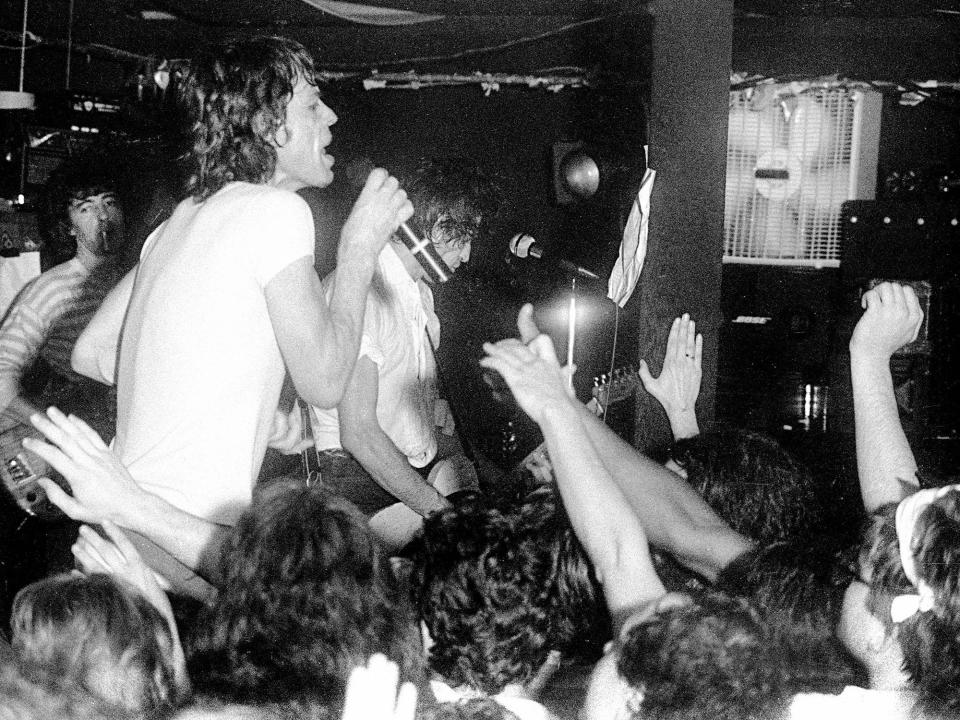
As a result of WBCN’s tactics, an estimated 4,000 people lined up on both sides of Green Street waiting for the Stones’ arrival.
Bob Goodell — the regional vice president of Cumulus Media: WXLO, The Pike and NASH Icon 98.9 Worcester/Boston and WMAS and WHLL Springfield — was an account executive at WAAF in 1981.
“On ‘AAF, we never ever disclosed where the show was going to be because the fear was there would be a massive crowd and the Stones weren’t going to play,” Goodell said. “‘BCN wanted to see the show canceled in Worcester and played in Boston. ’BCN was trying to derail it. They were stirring things up.”
Looking back, Goodell said it’s a miracle the Stones show happened.
“The night of the show, I went with a small group of people from the radio station and we parked over on Water Street somewhere and we cut across. And the closer we got, the louder the crowd got,” Goodell said. “The crowd was peaceful, but they were excited. They’re on the roofs of the buildings holding up signs and we all looked at each other and said, 'This is never going to happen.’”
Goodell said he thinks what saved the show was “an act of God.”
“Around 11:30 p.m., hail and lightning and rain pelted that crowd and people, a lot of them, got off the buildings,” Goodell said. “The crowd thinned out a little bit. They looked a little more like wet dogs than this exuberant group that they were before.”

Under age and watching the Stones
On Sept. 14, 1981, Neil Cavanaugh was an underage, baby-faced Burncoat High School senior standing 6-foot-4 and sporting a bulbous afro that made the top of his head 2 or 3 inches taller.
“I come home from school and I walk in the house and one of my sisters said, ‘Hey, they’re giving away tickets to the Rolling Stones show on Lincoln Street. All you need is an ID and a WAAF shirt on.’ So I had the shirt and I grabbed one of my older brother’s IDs and I went down to Lincoln Street,” Cavanaugh recalled. “In the parking lot of Kelly Funeral Home, they were giving away two tickets. You just had to show an ID. I got the two tickets and I was just over the moon."
When he got in the Cove, Cavanaugh said he was scared.
“You couldn’t even move. And this was shortly after the Who concert tragedy. I was thinking of that,” Cavanaugh said. “I was thinking if I fall, I’m not going to be able to get up. There’s no room. People are packed like sardines. Luckily, I’m taller than most. I wasn’t really lost in the shuffle. But I was nervous. I was really nervous.”
Cavanaugh, who was close enough to the stage to slap hands with Jagger and Richards, was also worried all night that someone would discover he was too young to be there and kick him out.
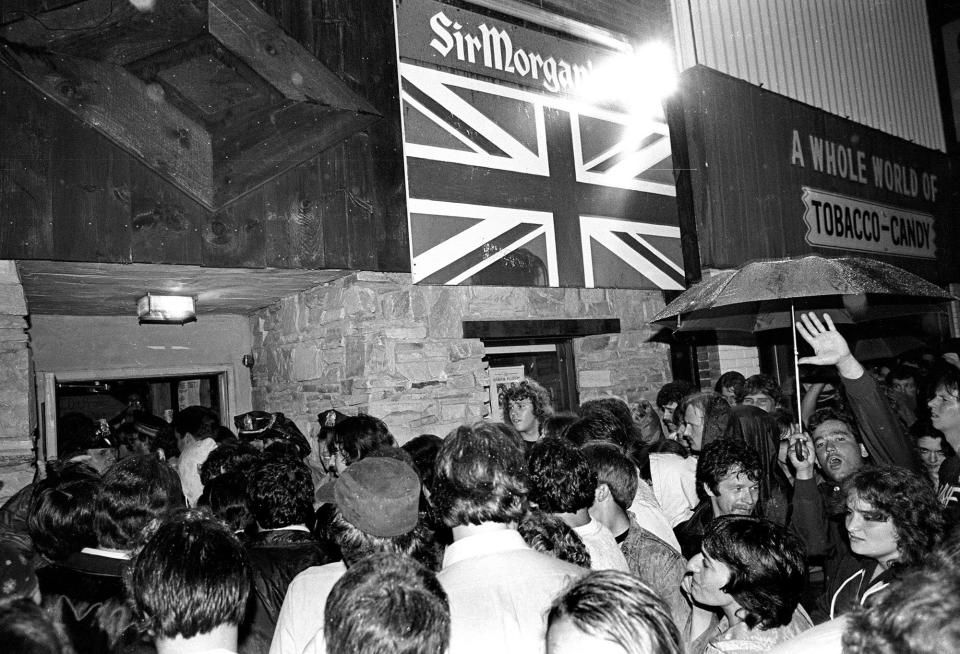
“I just went to the front of the stage and I stood there,” Cavanaugh said. “I didn’t drink. I didn’t socialize much. I didn’t want to draw attention to myself. I just wanted to behave myself, right in front of the stage. I just had my spot. And I stood there for a long while.”
Newspaper reporters on the inside
In 1981, Robert P. Connolly was a general assignment reporter for the Worcester Telegram and John Fraser was an entertainment columnist for the Evening Gazette. They were likely the only reporters inside the Cove that night.
“I don’t remember whether I was assigned, trying to get in (to see the Stones), or I just decided I was going to make it my mission,” Connolly said. “But I really did feel strongly that here you have a historic and national event occurring in the paper’s backyard and we deserve to be there as much or more than any other media outlet.”
In the case of Fraser, who died last September, he called Sir Morgan’s Cove owner Joe Faucher Jr. for a favor. He told the rock critic to be at a specific door at a specific time and, sure enough, the door opened at the designated time, a big hand grabbed Fraser by the shoulder, pulled him inside and the door slammed shut.
To get in, Connolly had to plea his case to legendary San Francisco-based rock concert promoter Bill Graham, who owned the 1981 Stones tour, and was screening people at the door.
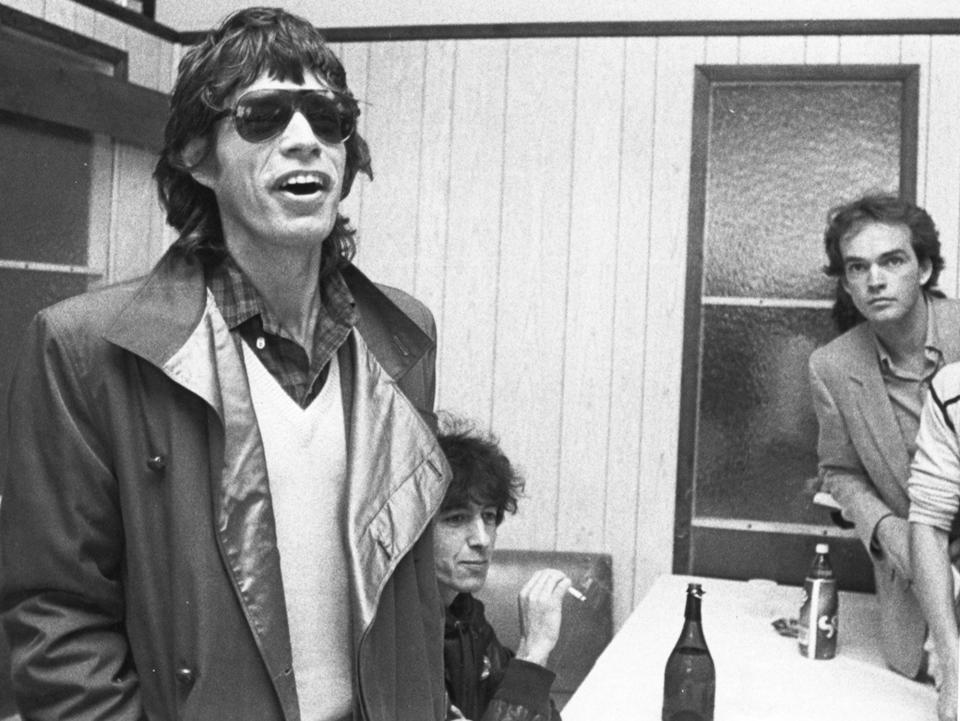
“As soon as he opened the door, I knew who he was. And the first thing out of his mouth, of course, was, ‘sorry, no press,’” Connolly recalled.
Another reporter was also there trying to gain admittance. He began to list all of the Graham promoted concerts he has seen — Grateful Dead at Fillmore West, Allman Brothers at Fillmore East, Lou Reed and Velvet Underground.
"He was trying to be like they were best buddies,” Connolly said.
Taking a much different and desperate approach, Connolly blurted out to Graham, “This is a historic, amazing night for Worcester and I wasn’t looking to review the concert. I was just looking to extend our coverage into the actual event itself and writing about this amazing night in Worcester history — The Rolling Stones playing a tiny club on Green Street.”
Graham listened to both pitches and told the two reporters that he would come back with an answer, Connolly recalled.
Five minutes before the show started, Graham swung open the door, pointed to Connolly and said, ‘You, you’re in.” He then pointed to the other reporter and said, “You, you’re not.”
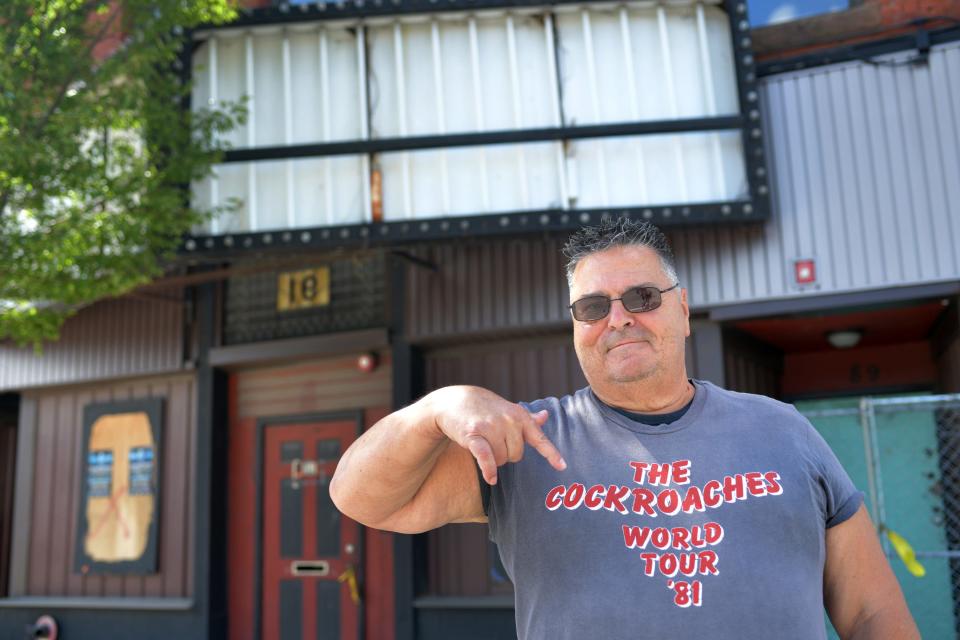
World’s greatest rock and roll band
Connolly shouldered his way down to the middle of the crowd, waving his reporter's notebook around like a police badge to get closer. Connolly found his spot and began to work on Tuesday’s front-page story.
“I’m a rock music fan. I’m an amateur guitar player. It was great to see the Stones,” Connolly said. “But you also have your game face on and, technically, you’re working and thinking about what time is deadline. How much of the show can I see? And when do I have to file?”
Before the Stones were done playing, Connolly called Telegram assistant city editor Jim Fox on a pay phone in the back of the club and, after a deep breath, dictated the story off the top of his head. It was about this time that it hit him what was going on at Sir Morgan’s Cove.
“This is the world’s greatest rock and roll band playing in a little club in Worcester,” Connolly said. “You felt like you were going back in time seeing the Stones as they once were, as when they were starting out a la the Beatles playing in Hamburg and Liverpool. One of the quintessential British Invasion rock bands is playing in Worcester and this is probably a lot like when they started out when they played for 200-300 people. This was insane. The night stands on its own as a musical event and significant cultural historical event for Worcester.”
Connolly wasn’t the only one working on deadline that night.
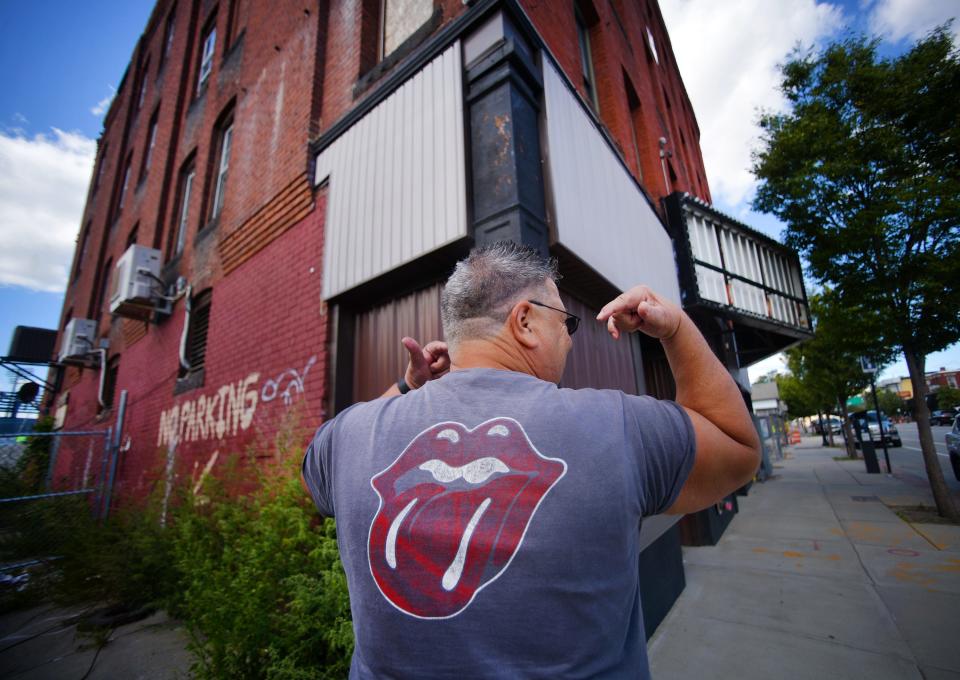
The Stones played the Cove for free
Faucher, the club's owner, not only scored the gig of a lifetime, he didn’t pay a penny even though Stewart told him, “Mick Jagger doesn’t like to play for nothing.”
The Stones finally did play for free and Faucher recalls the exchange the men had like it was yesterday.
"What would you expect for something like this?" Faucher asked Stewart.
"The last time we did this in Toronto, they gave us (receipts from) the bar," Stewart answered.
"Well, I can’t do that," Faucher said. ‘It breaks my heart to say no to the Stones but I’m a small-business man. I can’t just give you the bar. That’s how I make my living."
“OK, whatever,” Stewart shrugged.
As for up-and-coming bands playing the Cove after that immortal gig, Faucher would often ask, "I didn’t pay for the Stones, why should I pay you?"
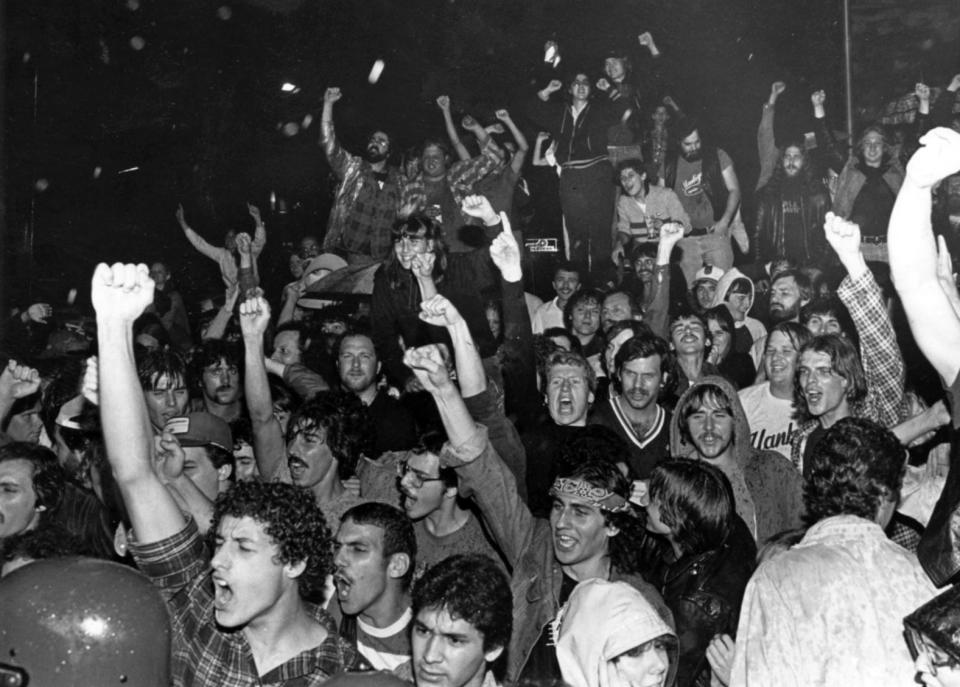
They arrived in a Winnebago
Around 11:30 p.m., a 35-foot Winnebago transporting the Stones came down Green Street and squeezed into the alley between Sir Morgan’s Cove and a neighboring garage.
Paul “Tiny” Stacy (the late co-owner of the Blue Plate Lounge in Holden) and Philip “Pinky” Girouard served as Sir Morgan’s Cove first (and only) line of defense if the crowd got out of hand inside.
Stacy stood in front of Jagger, while Girouard was off to the right, in front of Richards. Both were keeping an eye out on the crowd.
“I talked to Jagger and he said to me, ‘Look, I want to be able to get into the crowd. I want to touch them but you need somebody there so they can’t pull me down in the crowd,’ ” Faucher said. “So I put Paul there and I said to him, ‘Here’s the deal. Here’s what you got to do. You got to stop anybody from pulling Mick into the crowd but he wants them to be part of the show.’”
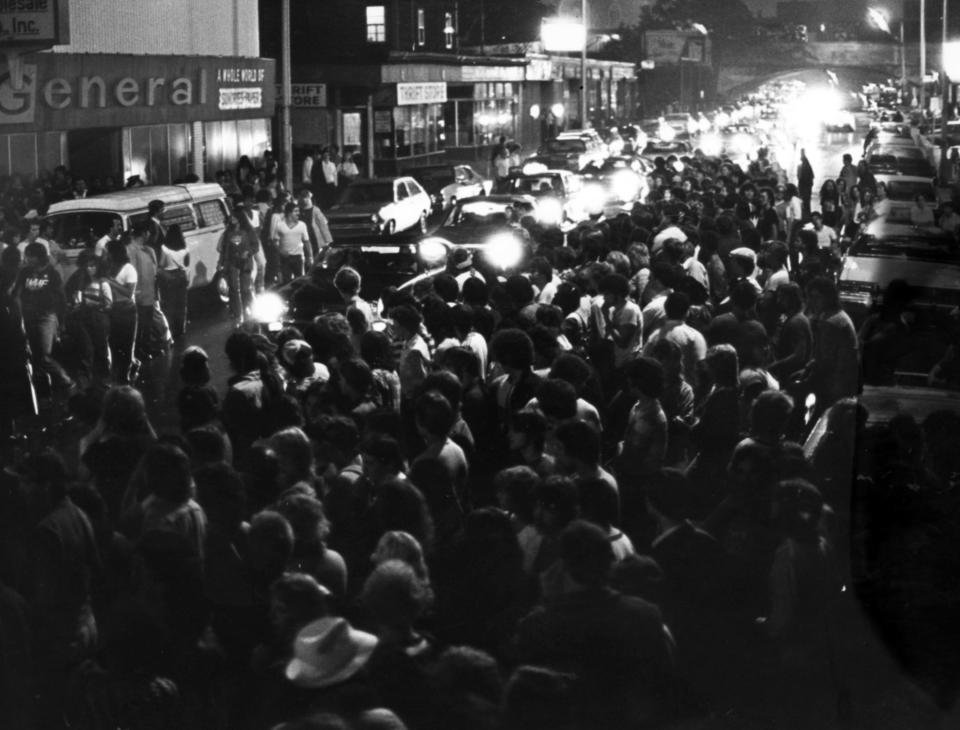
Despite Tiny being in front of Jagger, the frontman did have a verbal exchange with Girouard.
“Mick came up to me and said, ‘Just watch my legs so the girls don’t grab them,’ because it would trip him up because he’s not paying attention to his feet,” Girouard recalled. “I said, ‘I got it.'”
Girouard said the crowd was pushing him and Tiny against the stage.
“I remember I had some bruises around my knees and my thighs,” Girouard recalled. “It was like a couple of tons of weight just coming forward just mashing people. The little girls in front were definitely getting mashed. We pushed them back a few times so they didn’t get crushed."
The Stones did not allow cameras or sound recorders into the Cove, though Faucher said a rough-sounding tape may exist.
“Anybody who had a camera it had to be left at the door,” Faucher said. “They inspected the sound system to make sure there was no recording devices.”
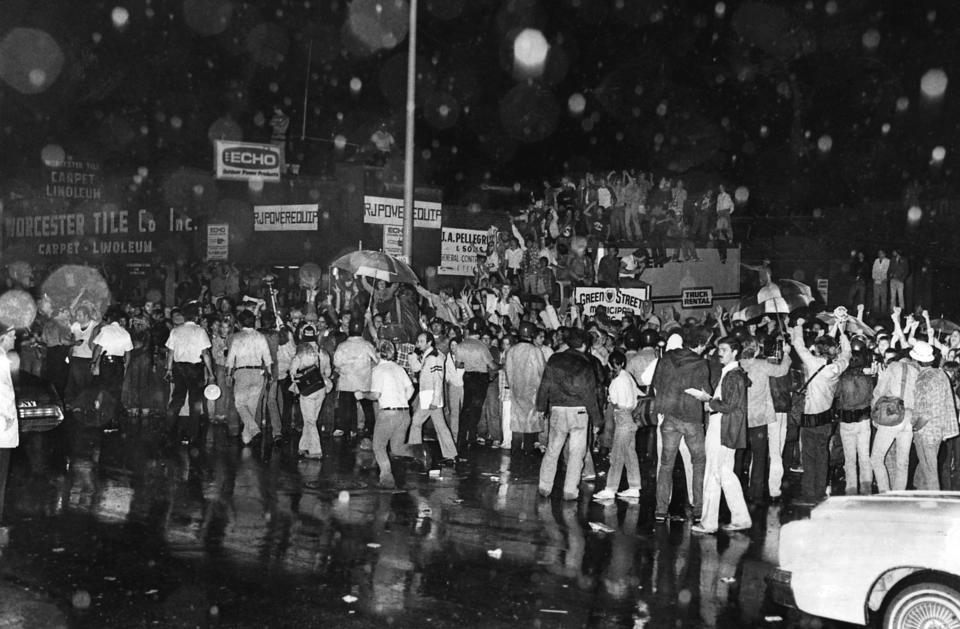
One thing that did get in was a folding buck knife, opened with the blade up.
“Tiny pulled this buck knife out of a guy’s hand that was up on stage and was gonna stab Mick Jagger,” Girouard said. “The guy was just a little skinny guy who wanted to be famous."
Faucher said the rest of the crowd inside the club was great.
“Everyone was so awestruck. It was so surreal. People were almost in shock. It was incredible. They were well-behaved. They respected what was going on,” he said. “I was in that club for almost 20 years and I had some great shows. I had Joe Cocker. I had Clarence Clemons and the Red Bank Rockers. I had Muddy Waters. I had a lot of top bands in there. But I never saw anything like this.”
Outside, it was even crazier
“You had 10,000 people out there (both the Worcester Telegram and Evening Gazette reported 4,000). You had the Worcester Police tactical force in full riot gear with face shields, battle batons, marching down Green Street,” Faucher said.
He said police just wanted to keep the peace.
"There was a show of force, but they just moved the crowd back, kept everyone safe," Faucher said. "The police did a great job, great job.”
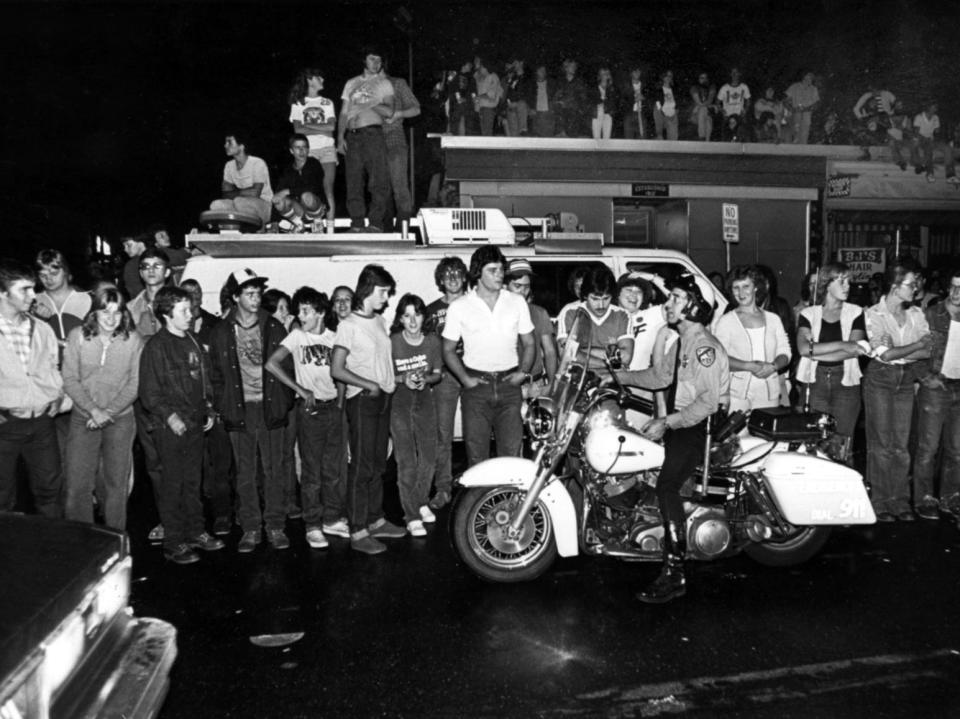
Faucher had the best idea of the night — to open the two front doors of the club so the people on Green Street could hear the Stones play.
“The police wanted to keep the doors shut," he said. "They were afraid the crowd would rush the building and I said, ‘Look, let me open the doors. They could hear the band.’
"Everybody there was just there to party and have a good time. Nobody was looking for trouble. It was a great night.”
In the end, 11 people were arrested in the vicinity of Sir Morgan’s Cove for being disorderly, disturbing the peace, drinking in public and throwing empty beer bottles. And WAAF paid the $5,000 for extra police details on Green Street.
Exciting 90-minute set
At midnight, the Stones took the tiny stage at the Cove and delivered an exciting 90-minute set.
“I want to introduce the members of the regular Monday night band in Worcester — Blue Monday and the Cockroaches,” a 38-year-old Jagger said to the crowd.
Forty years later, Connolly and Fraser’s stories published in the Worcester Telegram and Evening Gazette are the best documentation of what happened inside the Cove that night.
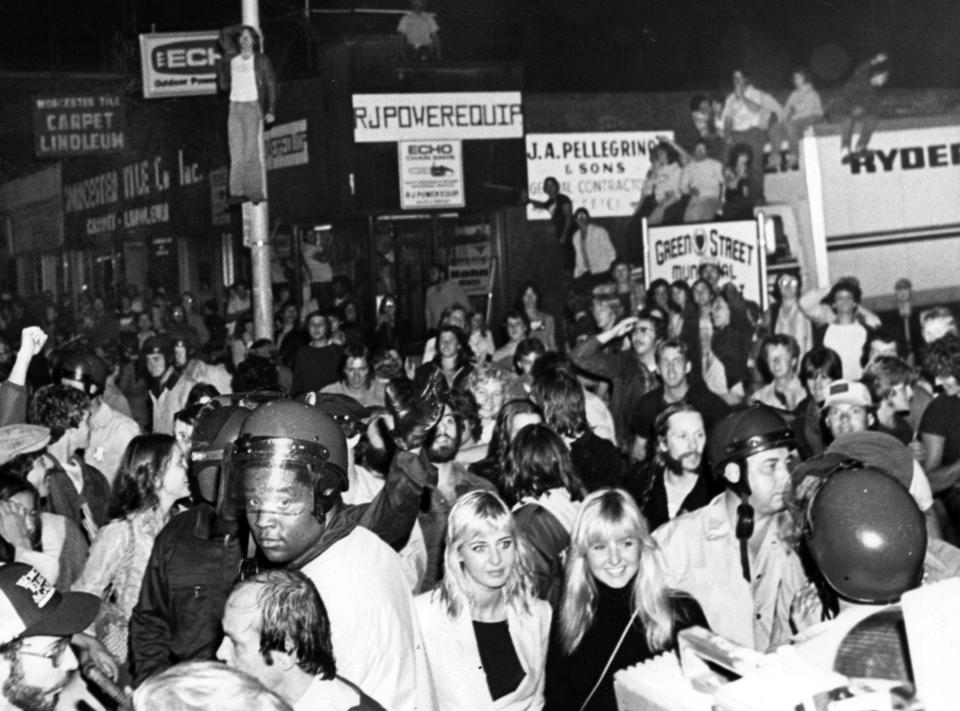
“Watching the Rolling Stones play from a distance of 10 to 15 feet is a lot like standing over Picasso’s shoulders as he applies the finishing brush strokes to a canvas,” Connolly wrote. “From the moment the Stones took the stage at Sir Morgan’s Cove late Monday night, both the band and the audience seemed to share the feeling that this was a singular event.”
“It was a shakedown cruise, a quick one around the bay before the Rolling Stones open their first tour in three years on Sept. 25 in Philadelphia,” Fraser wrote. “It was rock ‘n’ roll at its absolute rollicking best: A bit from here and a bit from there: from the new, acclaimed 'Tattoo You' album and last year’s (1980’s) 'Emotional Rescue' all the way back to 'Under My Thumb' from 'Aftermath' and Bo Diddley’s 'Mona' from 'Now.'”
The Stones opened the set with "Everybody Needs Somebody to Love," the Solomon Burke classic the band first recorded in 1965, followed by “Mona,” before kicking into the first Stones song of the night, “Under My Thumb.”
“Some sang along with well-known numbers like 'Under My Thumb' while others chose to silently — almost reverently — mouth the words,” Connolly wrote. “It seemed as if the fans — and, at times, the band itself — couldn’t quite grasp the notion of the Rolling Stones performing in a small — and somewhat shopworn — night club.”
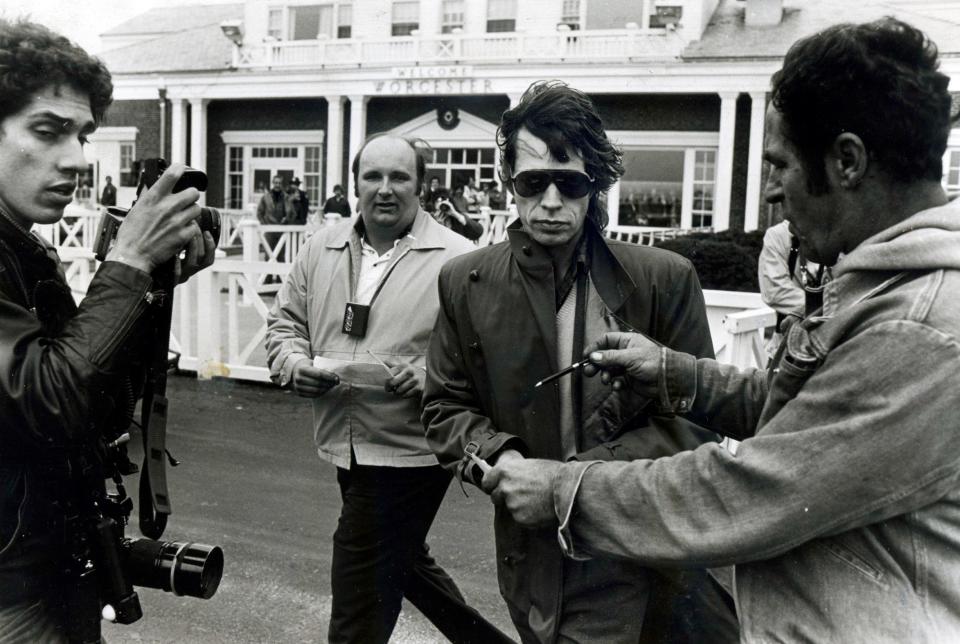
“The crowd was remarkably gentle and good-natured,” Fraser added. “Perhaps, because they couldn’t believe this was actually going on.”
Jagger, Richards and Ronnie Wood shook hands with fans up front. At one point, Wood handed the beer he was sipping to someone in the audience and said, “Be sure you save me some of it.”
“Mick Jagger, always, the band’s focal point and looking half his age, pranced from one side of the small stage to the other during the instrumental breaks,” Connolly wrote. “Jagger laughed and joked with the audience and reached out to grab the hands of fans that were straining to brush the arm of rock’s enfant terrible.”
Fraser also pontificated about Jagger’s remarkable stage presence — “Make no mistake, even in a sport shirt and alter a T-shirt and even alter bare-chested, the man’s a wonder. The costumes he wears in major concerts are an affectation — the charisma is his alone.
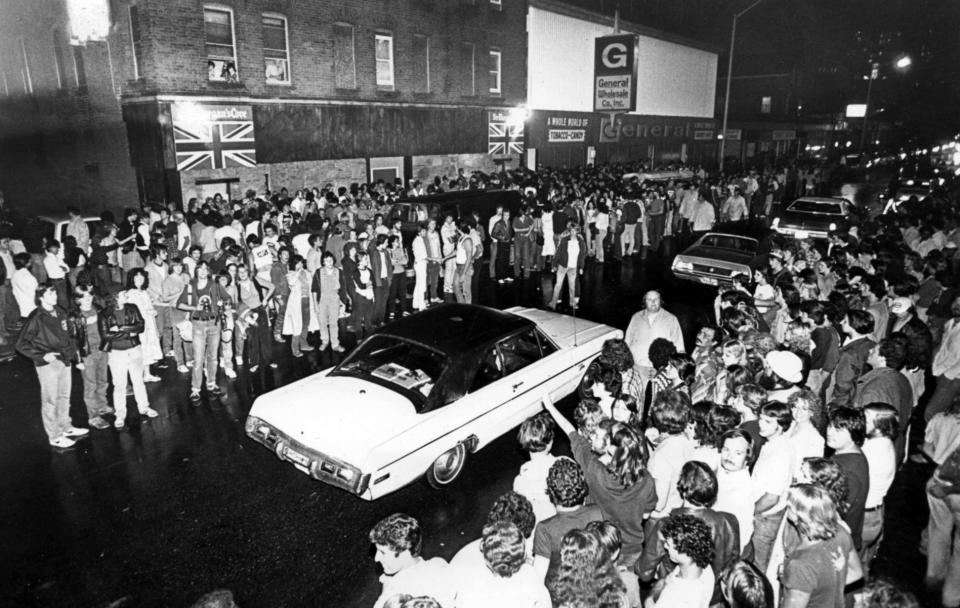
“His gestures appear grotesque when frozen in a still photograph,” Fraser said of Jagger. “But, in action, he jerks from strutting in near-spastic rooster-like fashion to a series of arm movements of Nijinsky-like grace. His cutting singing tore through the classic Richards-Wood guitar work like a ripsaw through oak as he pranced about the small stage mugging to the audience and joking between songs.”
At the Cove, the Stones would go on to play live staples that included “Miss You,” “Shattered,” “When the Whip Comes Down” and “Honky Tonk Women,” as well as playing live debuts of “Let It Bleed,” “She’s So Cold” and “Start Me Up,” the latter being one of three songs from the then three-week-old release, “Tattoo You” (with the other two songs being “Neighbours” and “Hang Fire”).
“As the band played 'Hang Fire,' Jagger, Wood and Richards exchanged knowing smiles as they ran around trying to reproduce the harmony vocal passage as it was record on the new album 'Tattoo You,'” Connolly wrote. “Between songs Jagger would run to a song list that was taped to a post at the front of the stage. Then, with a graceful pivot, he would turn his back to the audience and jokingly encourage his guitarists or shout, 'Are you ready?'”
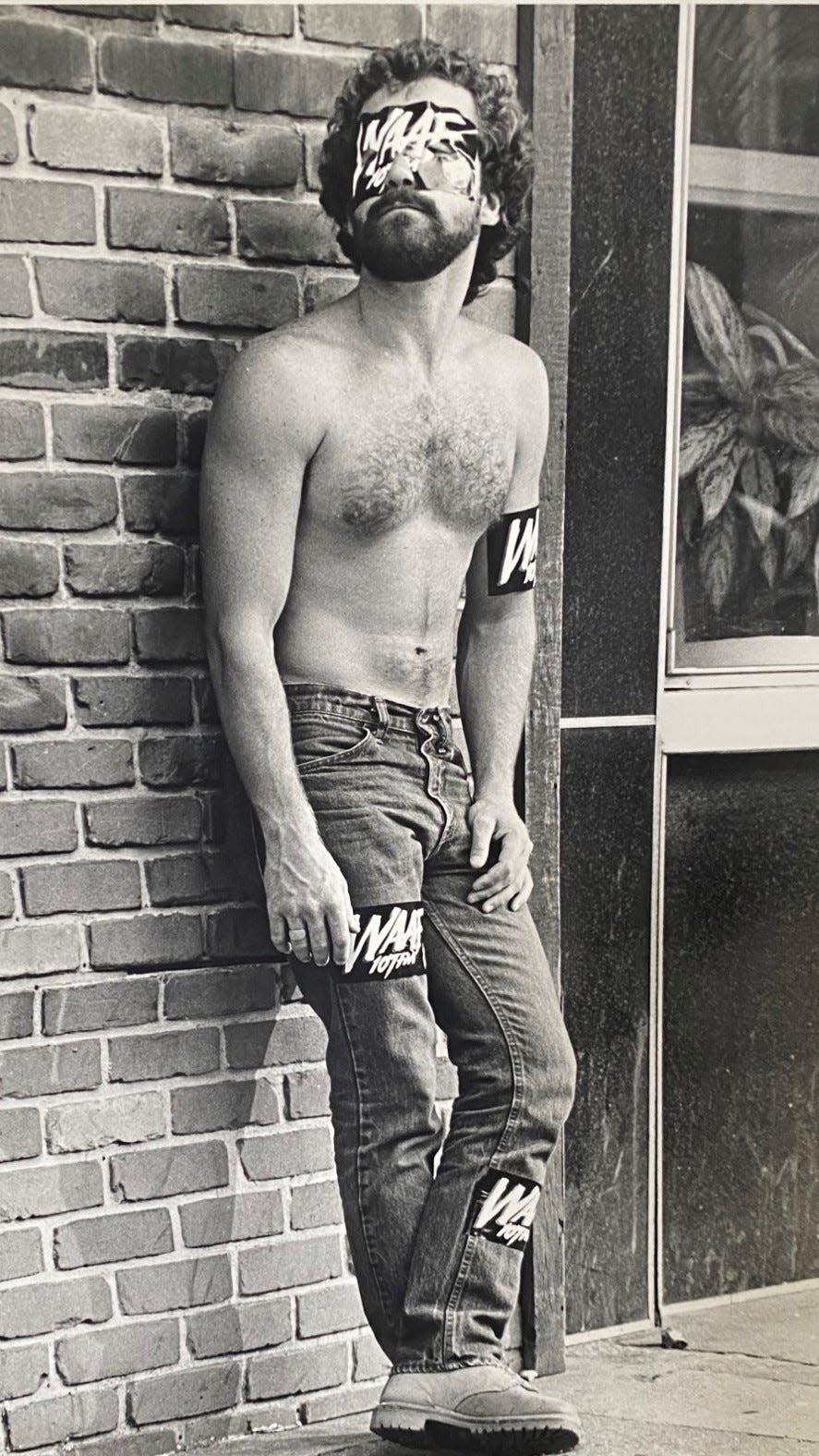
After “Start Me Up” and “Brown Sugar,” Jagger introduced “Jumpin’ Jack Flash,” which closed the set.
“Imagine: for an hour and 45 minutes at Sir Morgan’s Cove, for goodness sake, Jagger pranced and Keith Richards, the heart of the Rolling Stones, chomped through raucous boogie rhythms,” Fraser said.
Stones in their true element
And those who were lucky enough to get into the Cove that night agreed with the local music critics.
“You’re seeing the Stones in their true element, which is a small club, which is where they really hailed from. That’s where they shine,” attendee Cliff Goodwin said. “It was a little bit ragtag but that’s totally legal in Stones-land.
"It had rough edges but that’s rock ‘n’ roll. The Stones epitomized that. That’s what made it so cool. No one, probably, at that moment, could have guessed that it would be so legendary in Worcester folklore.”
“Almost 40 years later, I still feel the lump in my throat from every second of that night,” Barnett added. “I still feel the intense heat of 300 bodies pressed together so close. We were all one with the band.”
“I think we can unequivocally say that it was Worcester’s proudest rock ‘n’ roll moment,” Goodell insisted. “You had Paul McCartney at the Centrum and the Who, but they didn’t play a nightclub. The Rolling Stones at Sir Morgan’s Cove, how can you top that?”
They were off to Philadelphia
Ten days after they played their “warm-up” club gig at Sir Morgan’s Cove, the Rolling Stones conducted a farewell press conference at Worcester Airport.
“It was really nice — a bit hot. It really was warm inside there, but it was a good gig,” Jagger said of performing at the Cove.
Stones' bassist Bill Wyman called the Sir Morgan’s Cove performance “a great time.”
“It was like when we first started out,” Wyman added.
In the Oct. 29, 1981, issue of Rolling Stone magazine, Richards was quoted as saying the following about the Sir Morgan’s Club gig.
“It was great,” Richards said. “Probably better than we thought, because it was our first gig, and technically it was real rough. Also it was so hot, and there was no air. But the audience was great; we all had a good time. It wasn’t a difficult gig, really. It was as if we were playing the Station Hotel in Richmond in 1963. You don’t forget those things. It was sort of like, ‘Well, we did it then, we can do it now.’“
The next day, the Stones played in front of more than 180,000 fans at the John F. Kennedy Stadium in Philadelphia, the first date of a 40-city U.S. stadium tour, a tour that was born in North Brookfield and nurtured in Worcester.
Minutes before the Stones flew off, Jagger bid a fond farewell to Worcester.
“We’d like to say thanks very much to the people of this area who have been so hospitable to us for the last six weeks,” Jagger said. “And, some of you people have been inviting us back, so we’ll probably come back.”
The Stones never did come back.
As the Stones have taught us, you can’t always get what you want but on Sept. 14, 1981 Worcester had what the whole world wanted in its backyard, the Rolling Stones, up close and personal, and playing in a small club.
This article originally appeared on Telegram & Gazette: Rolling Stones: Inside story of 1981 show in small MA club
